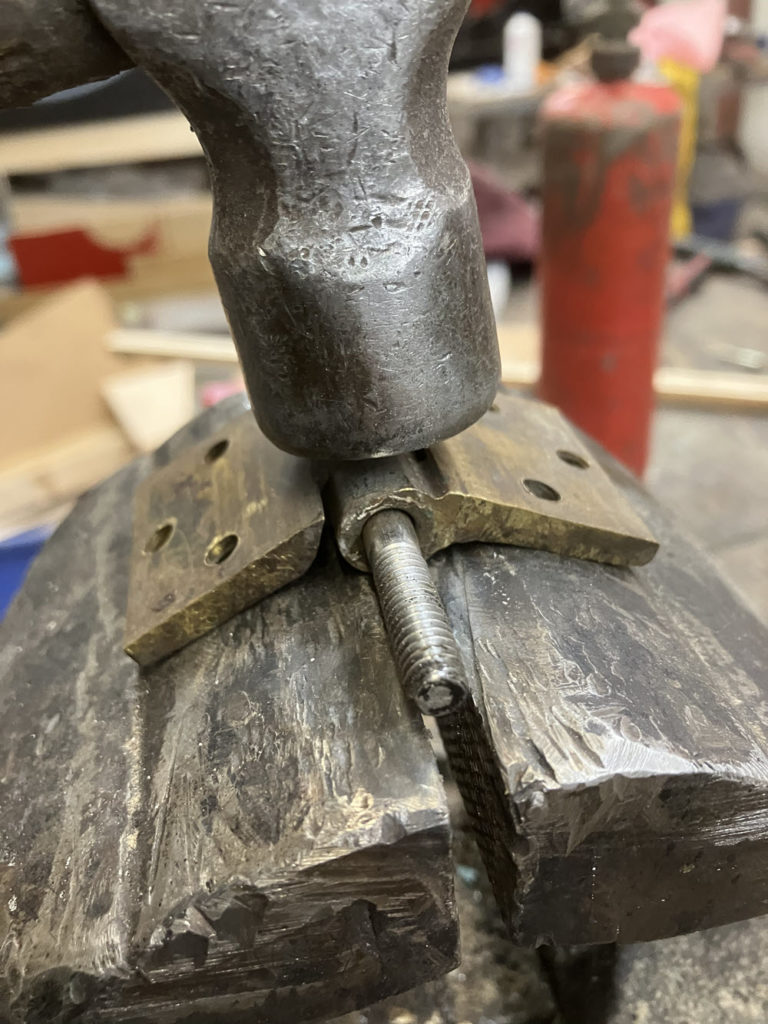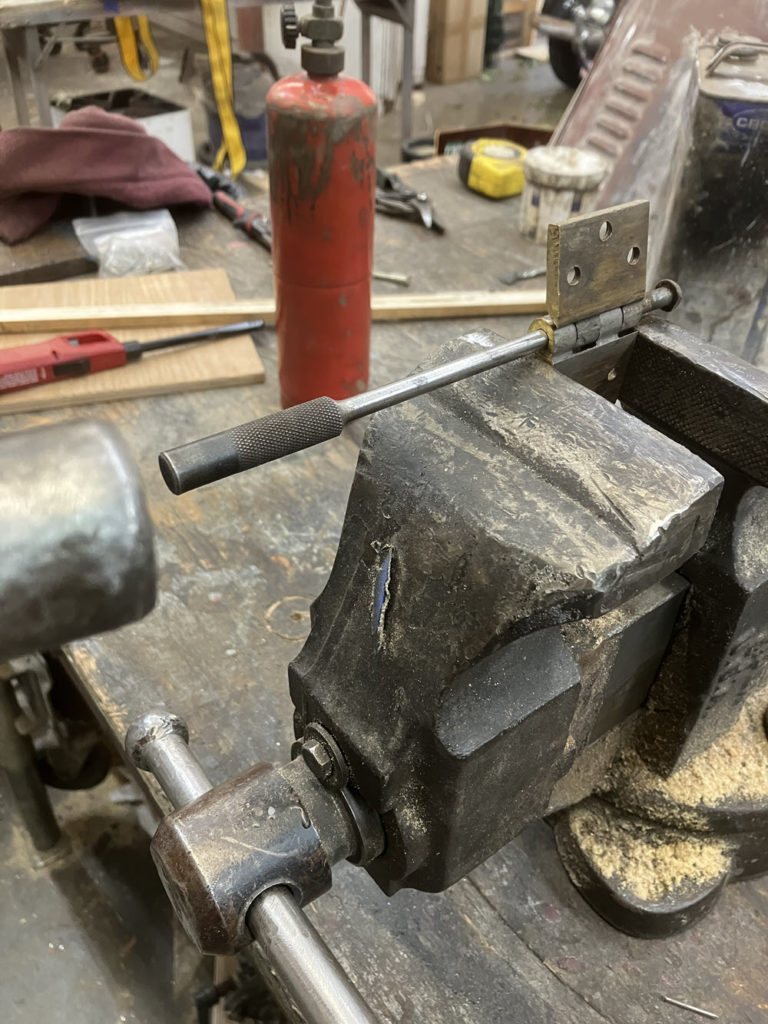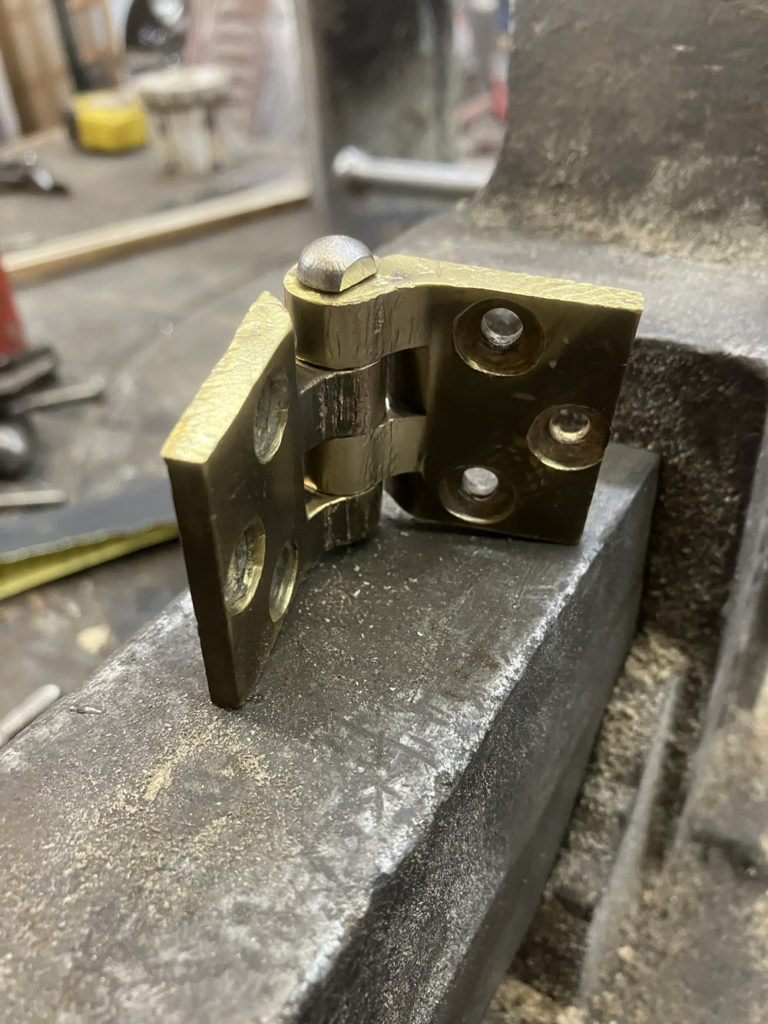The original hinges on Morgan doors are brass with steel pivot pins. The pins rust and the rust grinds away at the brass. You open the door and it droops. To close it, you have to lift it up a bit. Once closed there should be no slop; the dovetail should be supporting it. Some of us are willing to lift the door a bit, others less so. If the car is together and otherwise running I’m a door lifter. On the other hand, if the car is apart, as most of mine are when acquired, I will make an attempt to tighten the hinges.
Click any image to start a slide show…
Remedies
I can think of four possible solutions:
- Buy new hinges. I believe the original brass version is no longer available. The new replacements are stainless steel. Good but expensive and the early samples I saw were either so tight they would not “hinge” or as sloppy as the worn brass versions. I suspect all that has been corrected but I have no recent experience one way or the other.
- Rebush the original hinge and replace the pins. Never tried it. It is certainly possible but it seems like a lot of work.
- Ream the hinges and use oversize pins. Again a very good solution but it requires both a reasonable oversize ream and the ability to make or fit a new, proper size pin. I’ve done it a few times. First time I made the holes 5/16″ dia and made pins from 5/16″ SS rod and silver soldered material on one end to make the head. In hindsight I concluded that 5/16″ dia was too big although that set of hinges is still driving around 15 years later. Better is to ream the minimum oversize and lathe turn proper pins. Lotta work.
- Probably should call this option 3A. It is the option I use most often and assuming your time is worth nothing or you have nothing better to do, it does work very well 90% of the time. The original hinge pin is a “nominal” 1/4″ which means it is actually slightly undersize. I buy 1/4″ diameter stainless steel bar which is usually a snug fit in the original brass despite the wear. The tough part is getting a head on the rod. the following is how I do it but obviously other solutions are possible.
SPOILER NOTICE: Purists should probably stop reading here.
- 4. Shrink the original holes to fit a new pin. it’s not perfect but it does work.

Insert a 1/4″ SS machine screw that has a an unthreaded length longer than the hinge. Unfortunatly a 1/4″ dia screw is actually smaller than 1/4″. Stainless steel rod is a better fit but you have to add material for the head by silver soldering or welding (see above).
Set the vise jaws about 1/4″ apart and rest the hnge as shown.
Whack the hinge bosses with the hammer. the idea is to support it at two points while hitting on the third so that the hole is compressed rather than elongated.


Reposition the hinge and repeat, then flip it and keep gently whacking until it is sufficiently tight.








